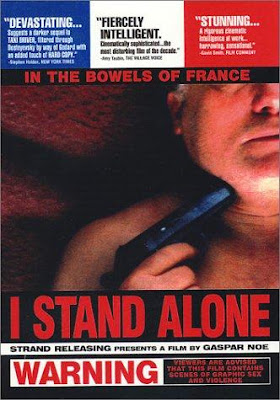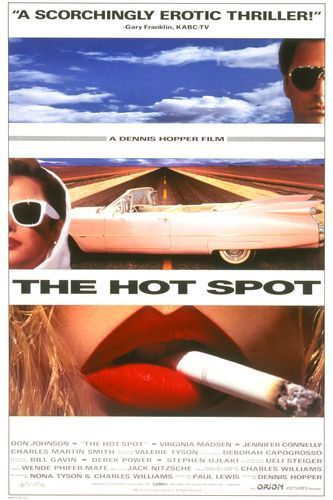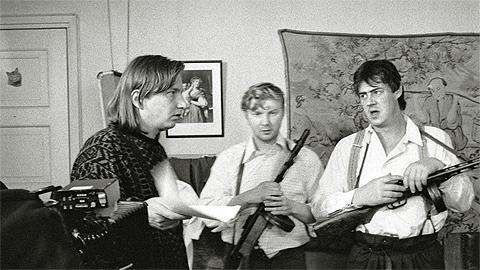

“A grim portrait of disaffection and loneliness, Gaspar Noe’s I Stand Alone is a movie clearly conceived to make a stir. With an armed, frustrated, and hate-filled time bomb at its center, it unabashedly recalls Taxi Driver, offering its own nihilistic spin on Martin Scorsese’s masterpiece of urban anomie and redemption. For a feature debut, it’s unbelievably daring. Noe doesn’t shy away from sprucing up his familiar story with Godard-ian flourishes, including occasional intertitles, a torrent of offscreen narration, and even a warning to the audience to leave before the wrenching finale. A more jarring conceit is the frequent use of abrupt cuts and fast dollies, accompanied by gunshots on the soundtrack. Genuinely startling and somewhat misconceived, the distracting device nonetheless goes some way toward evoking the volatile mindset of the protagonist. The movie shines a light on the circumstances that breed fascist and racist impulses. As politics, it isn’t terribly illuminating: Its depiction of underclass, xenophobic rage is shocking in its brutality but hardly revelatory in its insight. As a psychological interrogation, it’s more compelling, plunging the viewer into the mind of a disturbed man without sugarcoating. It’s this brazen willingness to shove something so repellent in its audience’s face that makes I Stand Alone both a courageous movie and an unpleasant experience. Whether the movie is genuinely probing or merely preoccupied with provocation is up for debate. What’s not is the movie’s visceral impact: This unrelenting essay about a lumpen brute sticks with you, despite — or perhaps because of — its lacerating bleakness” (AMG)
Read More »








